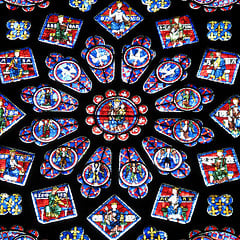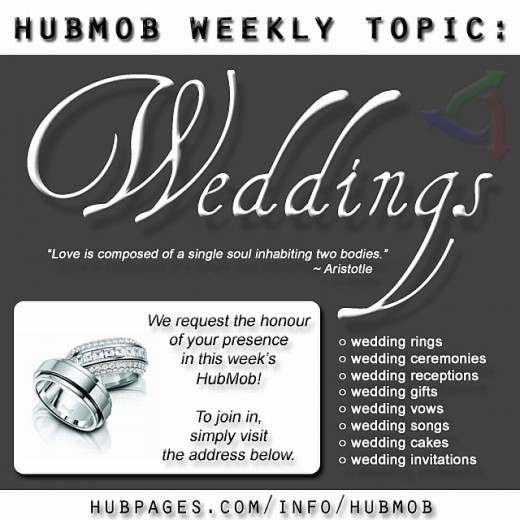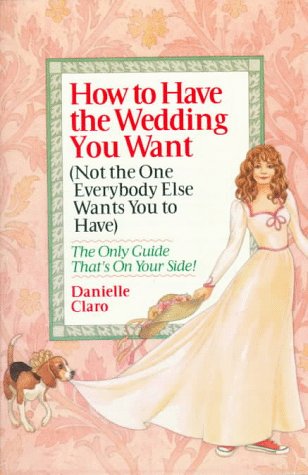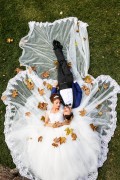Ideas for a Medieval Themed Wedding
A medieval themed wedding is a fun and romantic way to express your individuality as a couple. Medieval theme weddings can be as simple or as elaborate as you like. Here are some ideas and things to think about:
A Theme For your Medieval Theme Wedding?
Although many couples opt for a fairly generic Western European High Middle Ages look, it is worth remembering that the European Middle Ages lasted for more than 1000 years and incorporated cultures as varied as the Vikings, the late Byzantine Empire, and the elegant courts of Burgundy. One of the most popular medieval wedding sub-themes is Scottish or Celtic, complete with kilts and bagpipes. Nor were the Middle Ages confined to Europe. Other couples may choose to explore the beauty and elegance of medieval Persia, China, Japan, or India, to name a few.
Eras and cultures are not the only theme options. Shakespeare-themed weddings use the beautiful words of the finest writer the English language has ever known, and Lord of the Rings weddings are a popular choice among Tolkien fans. Some couples choose to make the dream of a fairytale wedding literal, and go with a fairy or fairytale theme.
The possibilities are nearly endless! Just bear in mind that the more unique and specific your wedding theme, the more likely you will need to purchase customized clothes and accessories, which may make it harder to stay within your budget.

Setting
It is important to choose a setting that matches your theme. A Romanesque or Gothic-style cathedral or church would be an excellent choice. Some towns also offer replication medieval themed castles or other buildings, and if you are lucky enough to live in Europe (or can afford to ship an entire wedding party there), you may be able to get married in a real one!
Medieval themed weddings are also well suited to outdoor settings such as parks and gardens.
Gowns and Clothes
The clothing of the bride, groom, and wedding party are one of the most visible aspects of your medieval themed wedding, so it is important to choose clothing that you love.
One issue to think about is how you want your wedding guests to dress. If your friends and family are Medieval/Renaissance enthusiasts, they may already own appropriate attire. If not, however, you may need to help them find inexpensive costumes to rent or purchase, or offer them the choice of dressing in modern clothes. For example, simple tunic-style dresses in rich fabrics and colors can pass for medieval in a pinch.
Medieval Wedding Rings
Although the rings are less visible during the ceremony than the wedding clothes, you will have to wear them a lot longer, so again, it is extremely important to choose rings that you love.
Fortunately, there are many jewelers who specialize in medieval themed rings and other jewelry, so finding the perfect ring is likely to be easier than finding the perfect clothes! Many jewelers also do custom work if you have a particular design or style in mind that you cannot find elsewhere.
Decorations and Flowers
After the setting and the clothes, decorations are probably the most important part of establishing your medieval themed wedding.
Flowers and other plants are especially important for spring and summer weddings. In medieval times, wedding bouquets were often composed of herbs with symbolic meanings, instead of flowers, which did not become popular until the late medieval and Renaissance periods. Wheat was also a common addition to wedding bouquets and decorations; it was a symbol of fertility. Like herbs, flowers had specific meanings. For example, orange blossoms, in addition to being a treasured status symbol due to their rarity, were supposed to symbolize happiness and fertility, lilies meant purity, and ivy meant fidelity.
Other decorations might include items such as banners in rich fabrics and colors, heraldic devices, and pewter goblets and centerpieces.
Some couples may choose to add living decorations! Horseback weddings are popular with some medieval enthusiasts.
A Medieval Wedding Banquet
A big part of the fun of having a medieval style wedding is having a medieval style wedding banquet. Though modern sensibilities don't usually allow baking live birds into pies or stitching together roast pigs and peacocks, there are plenty of other colorful medieval culinary traditions to enjoy.
You can have some fun deciding how authentic you want to be. The ubiquitous roast turkey drumsticks of Renaissance Festivals, for example, are delicious but hardly medieval - the turkey is a New World bird not introduced to Europe until well after the Middle Ages had past. For most of medieval history, forks were rare or non-existent. People ate instead with knives, spoons, fingers, and thick pieces of stale bread called trenchers. Such a feast could be a lot of fun ... but also very messy.
Music and Dance
There are a growing number of musicians and bands who specialize in medieval or medieval-inspired music, and many are available to be hired for weddings and similar events.
If you're on a tighter budget, a CD or mixtape of medieval music can do the trick. Popular vocal artists include Loreena McKennit, Mediaeval Babes, and Anonymous 4.
Depending on how experienced your guests are, you may want to mix traditional dances with modern favorites, or give guests a crash course in medieval dances by arranging for a more experienced dancer to call out the moves, or pairing experienced with inexperienced dancers.
A Medieval-Themed Wedding in England
More Medieval Inspiration
Don't forget to check out Renaissance Magazine's wedding issues for ideas!












